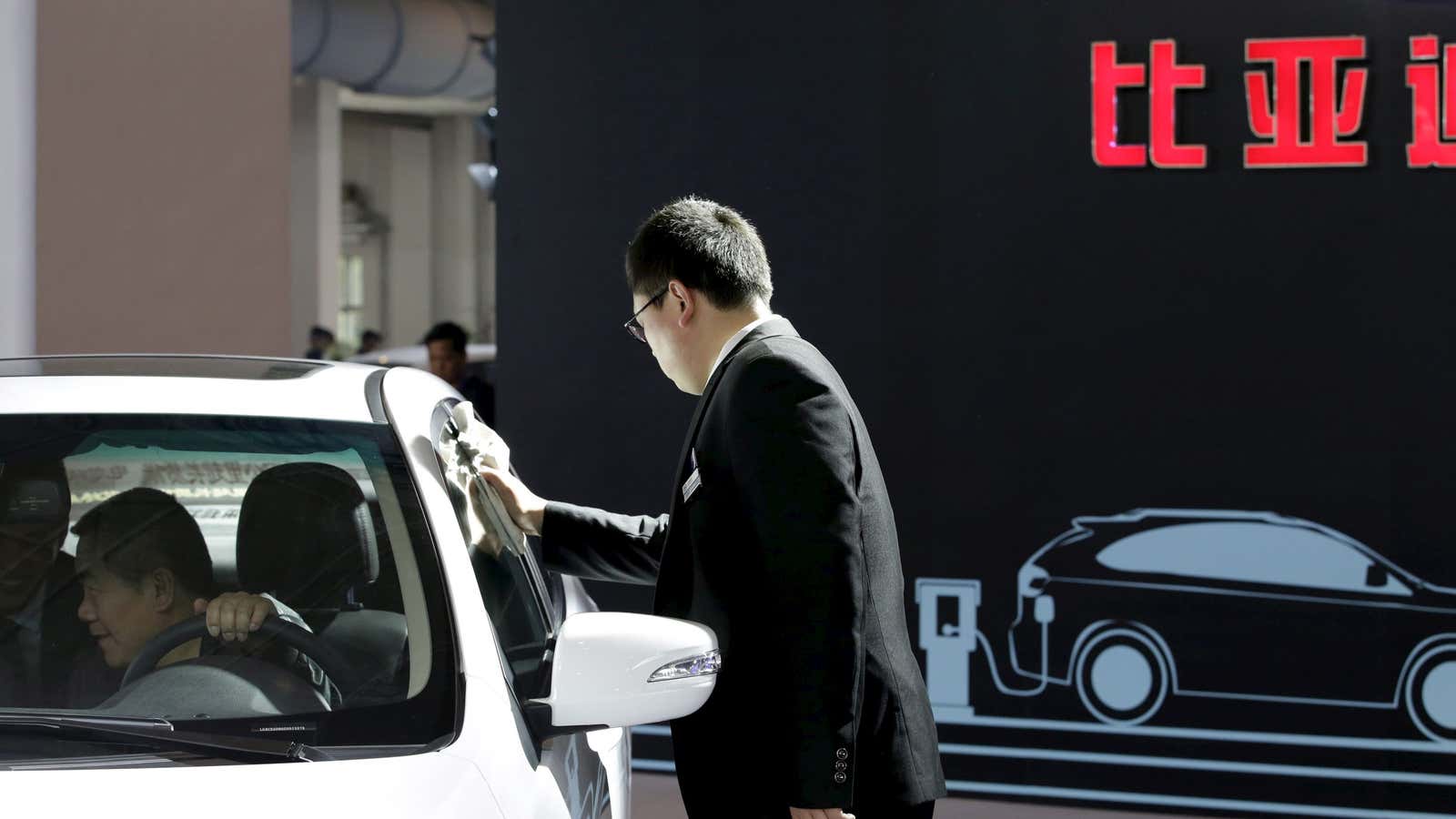Beijing on Tuesday (March 26) sharply scaled back the subsidies it began showering on its nascent electric vehicle industry about a decade ago, saying the move is intended to ”advance the industry by selecting the superior and eliminating the inferior.”
On average, subsidies have been cut in half (link in Chinese) for what China calls New Energy Vehicles, or NEVs, compared with those in 2018, according to a new calculation formula issued (link in Chinese) by the Ministry of Finance, along with three other industry regulators. NEVs include both pure battery vehicles and plug-in hybrids.
It’s a risky move. The tens of billions of dollars from the national and local governments to EV firms—some $60 billion from 2009-2017 counting subsidies and other incentives, according to one estimate—have allowed domestic manufacturers to sell vehicles more cheaply, creating the largest electric vehicle market in the world. Last year China saw sales of 1.2 million NEVs. Conversely, as the government has withdrawn that help in the wake of subsidy frauds that saw firms claim money for padded or fake sales, it’s been shaking up the industry.
BYD, China’s largest electric vehicle maker, received some $1 billion toward its nearly 100,000 NEV sales in 2016 from the central government according to a Quartz calculation. Since Beijing began tightening subsidies in 2017, its net profits have declined.
Here’s how subsidies for pure-electric passenger cars have changed:
Plug-in hybrid passenger cars with a range above 50 km will get 10,000 yuan each, 55% less than last year’s, EV news blog d1ev.com reported (link in Chinese). During a three-month grace period until June 25, firms can still apply for subsidies according to last year’s policies.
Beijing is also urging local government to remove purchase subsidies for a majority of NEVs after the grace period, but excluding new energy buses and fuel-cell vehicles from its appeal to provinces, according to the document. If local governments continue with their subsidies, the central government will correspondingly lower its share. Local governments can still spend money to support the building of charging facilities and hydrogen fueling stations.
The new rules give some breathing room, however, for NEVs sold to fleet-car customers such as taxis, but these are required to clock at least 20,000 kilometers (12,400 miles) (link in Chinese) before EV makers will get their money. That can put pressure on cash flow as it can take up to several years for a car maker to collect all the subsidies due for a given year of sales. China now says it will pay part of the subsidies when a car is sold and registered with the transport authority, and the rest when it has the mileage, a move that could help alleviate some of that pressure.
Carmakers have had a mixed reaction towards the policy, which saw US-listed EV startup NIO close down by more than 7% yesterday.
Yang Zhao, BYD’s head of public relations, told d1ev.com (link in Chinese) that it won’t raise its car prices. GAC NE, founded by state-owned carmaker GAC Group, also told the publication that it would not pass on the higher costs from the lost subsidies. JAC Motor told the news outlet that it’s still studying the new policy, but it “respects those firms that have announced they won’t raise their prices,” according to Wang Guangyu, a vice manager with the firm’s new energy sector. JAC Motor manufactures cars for NIO.
Looking for more in-depth coverage? Sign up to become a member and read more in-depth coverage of China’s electric-car boom in our field guide.
